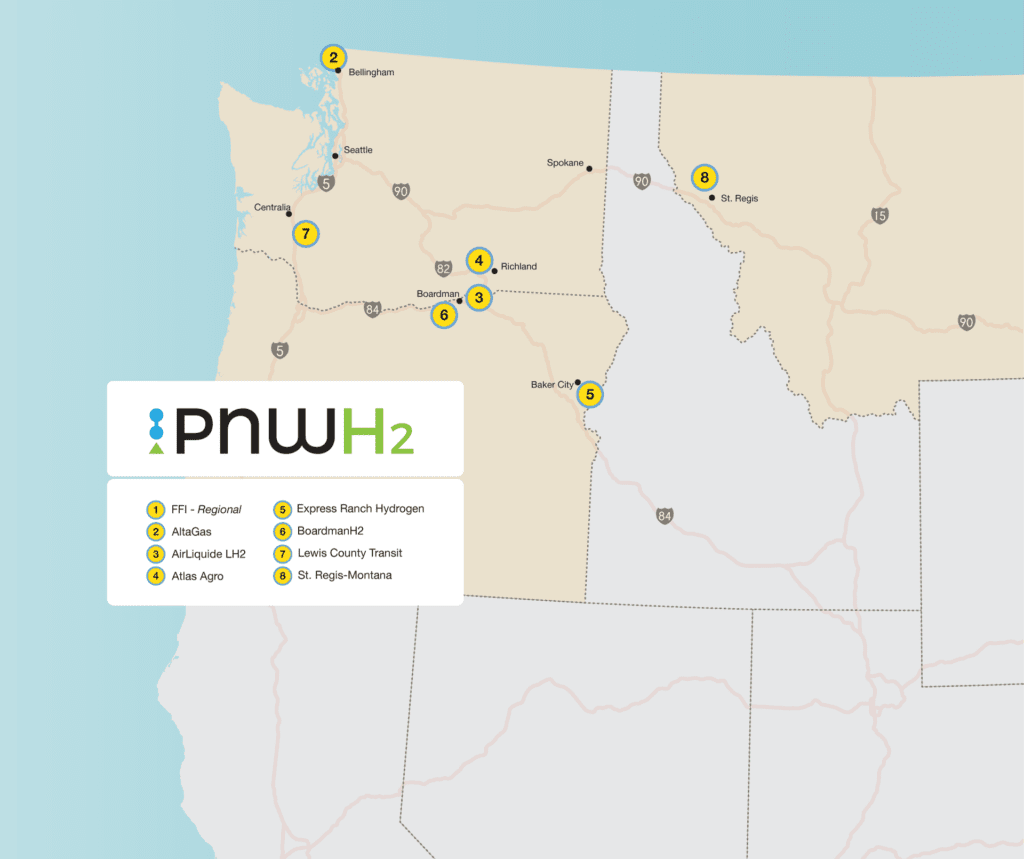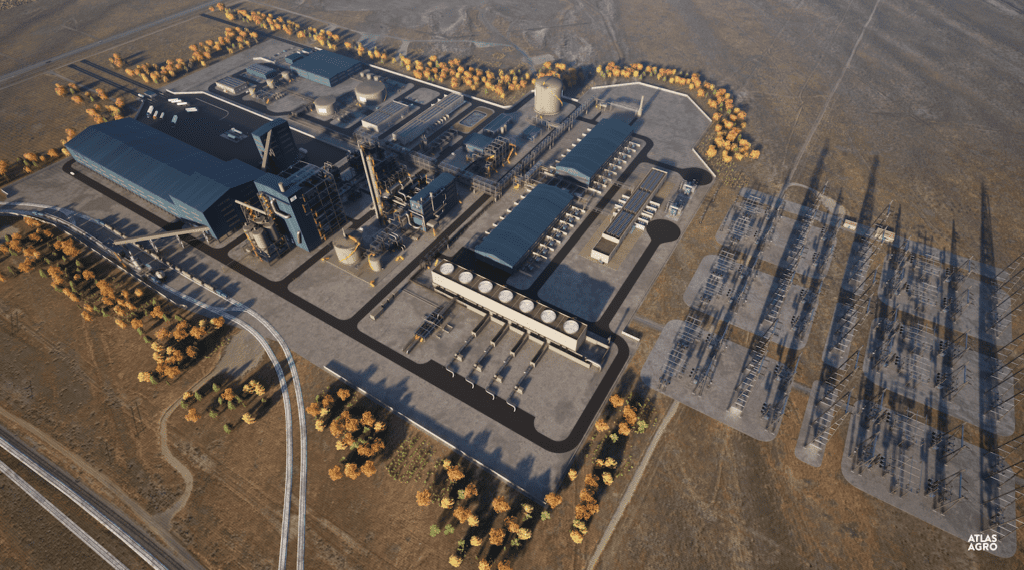Last fall, the U.S. Department of Energy (DOE) announced $7 billion in funding to launch seven Regional Clean Hydrogen Hubs across the nation. Among those selected was the Pacific Northwest Hydrogen Hub (PNWH2). Following the funding announcement, extensive efforts have been dedicated to organizing the Hub and its associated projects. In this interview, Chris Green, the president of the Pacific Northwest Hydrogen Association and Jamie Holladay, technical advisor for PNWH2, discuss the plans for the Hub and its place in the greater hydrogen landscape of the U.S.
“We’ve got 17 hydrogen projects across Washington, Oregon and Montana that do a host of different things, including production, and other downstream projects in the value chain like filling stations and fuel cells,” says Green. The projects are divided into eight nodes — five nodes in Washington, two in Oregon and one in Montana (Figure 1).

FIGURE 1. The proposed projects of the Pacific Northwest Hydrogen Hub
“These 8 nodes all are focused on developing green hydrogen for hard-to-decarbonize areas while growing and strengthening communities. We’re looking at doing electrolysis using the abundant low-cost green energy we have in the Northwest,” adds Holladay.
Generally, the Hub’s focus areas include medium- and heavy-duty vehicles, marine applications, transit, long-duration energy storage, power production and — crucially for the region — agriculture.
“We do have a very strong agricultural community here in the Northwest, so we’re looking at making green fertilizer. This is very exciting, because right now, the region imports our fertilizer from overseas, primarily from Russia,” he says. A potential project supporting green agriculture goals includes the construction of a fertilizer plant at Washington’s historic Hanford Site — a decommissioned nuclear-power complex located near the town of Richland. The Atlas Agro Pacific Green Fertilizer (PGF) facility (Figure 2) has completed the front-end engineering and design (FEED) stage, with production anticipated to begin in 2027, according to Atlas Agro. KBR, Inc. (Houston) is providing its process technology for the plant. A second Atlas Agro green fertilizer plant is slated to be constructed in Uberaba, Brazil. Holladay emphasizes: “I think the fertilizer project is very unique to our region. I’m particularly excited about that application, as well as the marine and the transit applications.”

FIGURE 2. A rendering of the proposed green fertilizer facility (Source: Atlas Agro)
For any site producing or using hydrogen, storage is of the utmost concern. For the PNWH2 Hub, onsite storage of gaseous hydrogen will be the primary method, but there are also potential plans for some pipelines to transfer liquefied hydrogen between nodes. In terms of production, the framework of the Hub dictates the use of hydrogen produced via water electrolysis using renewable power sources. The projects are considering different electrolyzer technologies, including alkaline and proton exchange membrane (PEM), with a number of different vendors.
Current work at the Hub mainly involves detailed plan development — phase one of a four-phase project. “Right now, we’re establishing hydrogen safety plans and reaching out to communities. We’re really engaging the communities to make sure we have their buy-in. It’s a priority for us that 40% of the benefits go to local communities, including tribal nations,” says Holladay, citing the work being done to ensure project alignment with the National Environmental Policy Act (NEPA).
Simultaneously with the detailed planning phase, Hub leadership is looking ahead to examine hydrogen use and demand, says Green. “Once projects are under contract, we can really start thinking more about what the demand side looks like. Once we get hydrogen supply into the market, we will need regular, reliable long-term customers,” he notes. Once supply and demand enter the equation, collaboration between the different Hubs and other regional corridors becomes key. “We are doing a lot of collaboration, particularly with the California Hub, looking at how we can link the region together, but that’s not the only one. Part of the DOE’s goal, of course, is establishing this framework across the nation. The seven Hubs are spread across the nation in order to make an entire hydrogen network, and so there is naturally a lot of communication between Hubs,” adds Holladay.
A particular example of cross-regional collaboration, says Green, is the development of a shipping corridor between Seattle and Alaska that potentially could tie into the Hub. “The DOE has some money set aside for a demand-side initiative that they’ll be releasing sometime in the next year or so. That’s the next step to get the supply activities moving,” he notes.
Other potentially promising avenues for the Hub’s green-hydrogen supply are use in decarbonizing petroleum refining and the production of sustainable aviation fuel (SAF). “Upgrading bio-crude to aviation fuel, maritime fuels or even biodiesel, require tremendous amount of hydrogen for the hydrogenation processes. It’s among the highest costs next to transporting the biomass. We’re currently in discussions with some local refineries for offtakes for various applications like this,” says Holladay. Once the hydrogenation piece is in place with green hydrogen, the decarbonization benefits flow down the bioprocessing value chain, enabling decarbonized bio-plastics and other chemicals.